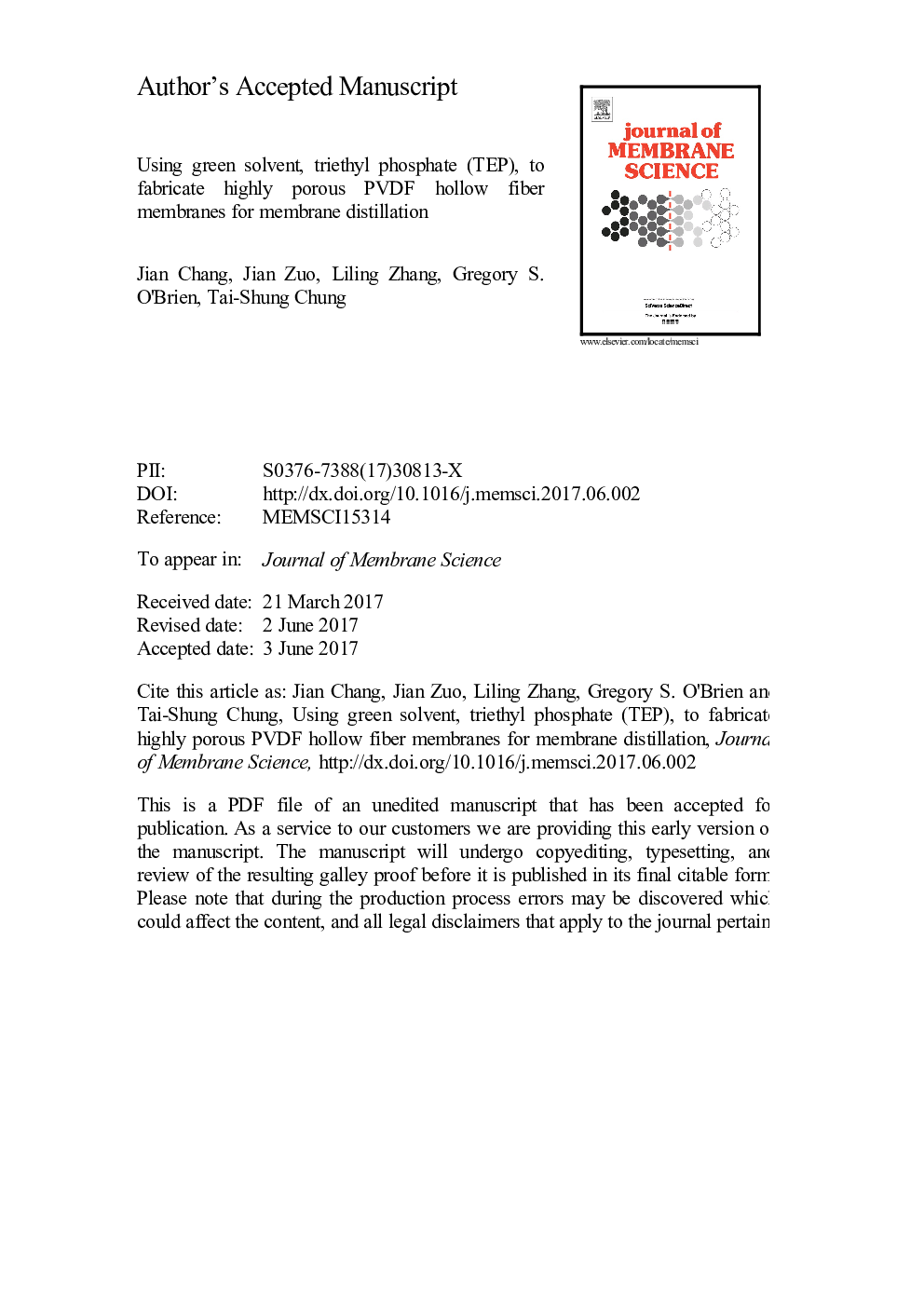| کد مقاله | کد نشریه | سال انتشار | مقاله انگلیسی | نسخه تمام متن |
|---|---|---|---|---|
| 4988789 | 1455960 | 2017 | 41 صفحه PDF | دانلود رایگان |
عنوان انگلیسی مقاله ISI
Using green solvent, triethyl phosphate (TEP), to fabricate highly porous PVDF hollow fiber membranes for membrane distillation
دانلود مقاله + سفارش ترجمه
دانلود مقاله ISI انگلیسی
رایگان برای ایرانیان
کلمات کلیدی
FESEMDMACNMPTEPLEPN-methyl-2-pyrrolidoneIPANPTMSDDCMDdimethylacetamidePVDFDMFIsopropanol - ایزوپروپانول، ایزوپروپیل الکلTriethyl phosphate - تری اتلی فسفاتDirect contact membrane distillation - تقسیم مستقیم غشای تماسMembrane distillation - تقطیر غشاییdimethylformamide - دی متیل فرمالیدParticle mesh Ewald - ذره مشکی EwaldPME - شرکتهای کوچک و متوسطLiquid entry pressure - فشار ورودی مایعmean squared displacement - میانگین جابه جایی مربعField emission scanning electron microscopy - میکروسکوپ الکترونی منتشر کننده انتشار میدانPolyvinylidene fluoride - پلی وینیلیدین فلوراید
موضوعات مرتبط
مهندسی و علوم پایه
مهندسی شیمی
تصفیه و جداسازی
پیش نمایش صفحه اول مقاله

چکیده انگلیسی
While membrane technology continues to thrive in seawater desalination, it would defeat the very purpose of saving the environment if toxic solvents are involved in membrane manufacture. As a paradigm of green chemistry, a non-toxic solvent, triethyl phosphate (TEP), was used for the first time to fabricate polyvinylidene fluoride (PVDF) hollow fiber membranes for direct contact membrane distillation (DCMD). The phase inversion kinetics of the PVDF/TEP system was closely investigated and compared with the conventional N-Methyl-2-pyrrolidone (NMP)/PVDF system. The former showed a less abrupt phase inversion rate and produced a more porous sponge-like structure than the latter. The 12/88 wt% PVDF/TEP binary solution produced fibers with promising performance. They not only possessed robust mechanical properties and a liquid entry pressure up to 2.0 bar but also exhibited an average flux of 20 kg/m2·h at 60 °C and a NaCl rejection of 99.99%. In addition, hollow fiber membranes spun from this PVDF/TEP system had porosity of greater than 83% for all conditions studied. Since there were no additives or non-solvents in the dope solutions and no post-treatments involved, the use of TEP as a green solvent could significantly reduce the complexity of membrane fabrication, scale up and commercialization. Clearly, the much safer solvent TEP is able to replace toxic solvents commonly used in membrane manufacture and to produce membranes with highly competitive performance.
ناشر
Database: Elsevier - ScienceDirect (ساینس دایرکت)
Journal: Journal of Membrane Science - Volume 539, 1 October 2017, Pages 295-304
Journal: Journal of Membrane Science - Volume 539, 1 October 2017, Pages 295-304
نویسندگان
Jian Chang, Jian Zuo, Liling Zhang, Gregory S. O'Brien, Tai-Shung Chung,